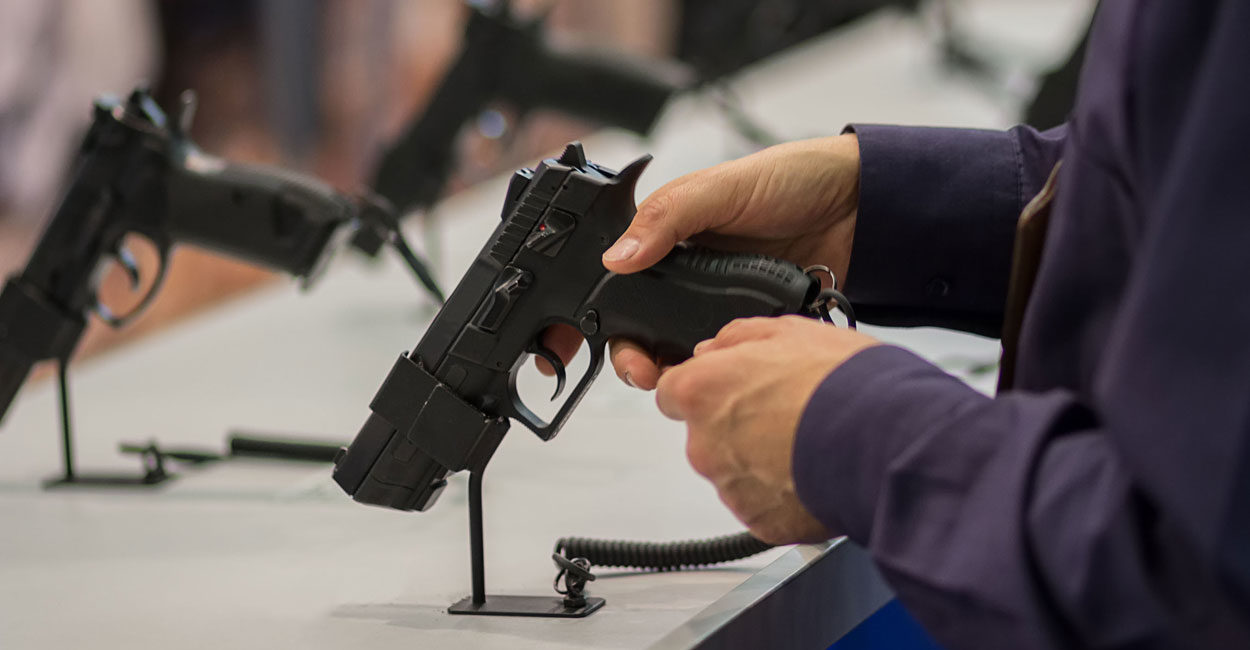By: John G. Malcolm & Amy Swearer – dailysignal.com – March 14, 2018
Global statistics show that higher rates of gun ownership are not associated with higher rates of violent crime. (Photo: DmyTo/Getty Images)
In the wake of the tragic murder of 17 innocent students and teachers at Marjory Stoneman Douglas High School in Parkland, Florida, students, educators, politicians, and activists are searching for solutions to prevent future school shootings.
As emotions morph from grief to anger to resolve, it is vitally important to supply facts so that policymakers and professionals can fashion solutions based on objective data rather than well-intended but misguided emotional fixes.
Are there ways to reduce gun violence and school shootings? Yes, but only after objectively assessing the facts and working collaboratively to fashion commonsense solutions.
Here are eight stubborn facts to keep in mind about gun violence in America:
1. Violent crime is down and has been on the decline for decades.
2. The principal public safety concerns with respect to guns are suicides and illegally owned handguns, not mass shootings.
3. A small number of factors significantly increase the likelihood that a person will be a victim of a gun-related homicide.
4. Gun-related murders are carried out by a predictable pool of people.
5. Higher rates of gun ownership are not associated with higher rates of violent crime.
6. There is no clear relationship between strict gun control legislation and homicide or violent crime rates.
7. Legally owned firearms are used for lawful purposes much more often than they are used to commit crimes or suicide.
8. Concealed carry permit holders are not the problem, but they may be part of the solution.
Each of these facts is firmly based on empirical data. Here’s a deeper look.
1. America is relatively safe, and the trend is toward becoming safer.
- According to the National Crime Victimization Survey, violent crime has been declining steadily since the early 1990s.
- The 2011 homicide rate was almost half of the rate in 1991, and according to the Pew Research Center, the 2013 gun-related death rate was half of the rate in 1993.
- The number of nonfatal firearm crimes committed in 2011 was one-sixth the number committed in 1993.
- In the past few years, there have been minor increases in certain types of violent crimes, mainly in large metropolitan areas. However, these increases are nowhere near those seen in the 1990s and are largely related to gang activity.
- It should be remembered that it takes at least three to five years of data to show true trend lines. It appears that the collective homicide toll for America’s 50 largest cities decreased modestly in 2017 after two consecutive years of increases.
2. The principal public safety concerns are suicides and illegally owned handguns.
- According to the Pew Research Center, almost two-thirds of America’s annual gun deaths are suicides. Since 1981, when the Centers for Disease Control and Prevention began publishing data, gun suicides have outnumbered gun homicides. In 2010 alone, 19,392 Americans used guns to kill themselves.
- Most gun-related crimes are carried out with illegally owned firearms—as much as 80 percent according to some estimates.
- The FBI’s Uniform Crime Reports prove that the overwhelming majority of gun-related homicides are perpetrated with handguns, with rifles of any kind accounting for less than 3 percent of gun-related homicides. In 2013, 5,782 murders were committed by killers who used a handgun, compared to 285 committed by killers who used a rifle. The same holds true for 2012 (6,404 to 298); 2011 (6,251 to 332); 2010 (6,115 to 367); and 2009 (6,501 to 351).
- More people are stabbed to death every year than are murdered with rifles.
- A person is more likely to be bludgeoned to death with a blunt object or beaten to death with hands and feet than to be murdered with a rifle.
3. A small number of factors significantly increase the likelihood that a person will be a victim of a gun-related homicide.
- Where do you live? Murders in the United States are very concentrated. According to the Crime Prevention Research Center, over 50 percent of murders occur in 2 percent of the nation’s 3,142 counties. Moreover, gun-related homicides are heavily concentrated in certain neighborhoods within those counties: 54 percent of U.S. counties had zero murders in 2014.
- Who is your partner? According to a recent scholarly article in the Hastings Law Journal, people recently or currently involved in an abusive intimate relationship are much more likely to be victims of gun-related homicide than is the rest of the population, especially if the abuser possesses firearms.
- Are you in a gang? According to the Department of Justice’s National Gang Center, particularly in urban areas, significant percentages of gun-related homicides (15 percent to 33 percent) are linked with gang and drug activity. Gang-related homicides are more likely to involve firearms than non-gang-related homicides are.
- Are you a male between 15 and 34? The majority of standard gun murder victims are men between the ages of 15 and 34. Although black men make up roughly 7 percent of the population, they account for almost two-thirds of gun murder victims every year.
- Women and children are more likely to be the victims of mass shootings and homicide-suicide shootings than they are to be the victims of a “typical” gun-related homicide.
4. The perpetration of gun-related murders is often carried out by predictable people.
To see the remainder of this article, click read more.
Source: Here Are 8 Stubborn Facts on Gun Violence in America
 Listen Online
Listen Online Watch Online
Watch Online Find a Station in Your Area
Find a Station in Your Area








 Listen Now
Listen Now Watch Online
Watch Online
